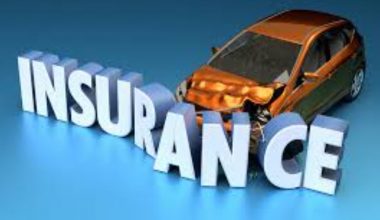Are you unsure how to lower your car insurance premiums? Many insurance providers provide discounts and incentives that might help you save money on your auto policy. Check with your insurer’s reps to see how you might save money. They can tell you the ones you are eligible for. Reducing your car insurance cost is a simple method to save money. Here are some suggestions to lower your car insurance rates.
Can You Negotiate Car Insurance Rates?
The simple truth is that you cannot negotiate rates because each state strongly regulates prices and the insurance sector. The insurer is unable to adjust its rate range without a state review and proof that the change is required.
Here are 17 suggestions to lower your car insurance premiums.
- Increase your deductible.
- Examine your eligibility for any discounts.
- Auto insurance quotes comparison
- Keep a clean driving record.
- Take part in a safe driving program.
- Enroll in a defensive driving course.
- Investigate your payment options.
- Increase your credit score.
- Take part in a low-mileage driving program.
- Use public transportation.
- Contact Your Agent
- Change to Pay-As-You-Go Insurance.
- Remove coverage that you may not require.
- Examine your current policies.
- Consider the attributes of your vehicle.
- Discover ways to save money with teen drivers.
- Combine your policies.
#1. Increase your deductible.
Paying a larger deductible (the amount you pay out of pocket before your insurance coverage kicks in in the event of an accident) is often a quick and straightforward option to make your car insurance payments less expensive, depending on your insurance provider.
You may be able to do this straight online or through the mobile app of your insurance company. Keep in mind that if you get into an accident, you must be prepared to pay the deductible amount yourself. To be safe, make sure you have enough savings saved aside to pay your deductibles.
#2. Double-check your eligibility for any discounts.
Examine your insurance company’s discounts to ensure you’re receiving the greatest deal on your car insurance.
There could be some reductions available that you were not aware of. Liberty Mutual provides a variety of car insurance savings, ranging from going paperless to signing up for a new policy before your current one expires.
Common car insurance discounts include;
- Purchasing your policy online.
- Enrolling in preferred payment methods such as automated withdrawal.
- Combining your car insurance with your house insurance or several vehicles.
- Participating in a defensive driving program.
- Having modern anti-theft and safety systems in your car.
- Having an energy-efficient car.
- For teens or young drivers, being a good student or being away from school.
- Being a member of the military, whether active, retired, or reserve.
Some companies may even give you a discount if you park in a garage (especially if you reside in a high-theft region) or drive a certain amount of miles.
#3. Compare car insurance quotes.
Get many rates, either online or from a local insurance agency.
It’s important to remember that the lowest insurance isn’t necessarily the best. Concentrate on the coverage you require and ensure that the prices you receive match this. If a cheap car insurance quote seems too good to be true, it probably is.
#4. Keep a clean driving record
It pays to drive safely in addition to protecting yourself and others on the road.
Avoid speeding, accidents, and other driving mishaps at all costs. Not only can you avoid costly speeding tickets or other driving violations, but you also help keep your insurance rates lower by demonstrating that you’re a less hazardous driver.
Furthermore, if you have a claim-free or violation-free past, you may be eligible for further reductions.
#5. Enroll in a safe driving program.
Have a bad driving record or been in an accident recently? There is always space for improvement. A safe driving program can help you demonstrate your safe driving habits regardless of your driving record.
This program can be a wonderful method to proactively demonstrate that you’re a responsible driver without having to wait for your insurance rates to drop after an accident or infraction.
#6. Enroll in an accident prevention course.
Driving lessons are not only for novice drivers. In certain jurisdictions, Liberty Mutual offers a discount to policyholders who complete an approved accident prevention driver course. Some courses are even available online.
#7. Check your payment choices.
You could save money on your car insurance rate if you can be flexible with your payment options.
If you pay for your coverage in one or two annual payments, Liberty Mutual will give you a discount. You can also save money by using a preferred payment method, such as linking a bank account.
Another alternative is to go paperless for your account statements and communication; you’ll save money on your insurance while also helping the environment. It’s a win-win situation.
#8. Improve your credit score
What is the relationship between my credit score and my car insurance? In some states, insurance companies may do a credit check as part of their risk assessment.
People with higher credit scores may receive lower insurance rates since they are more likely to make responsible driving judgments.
If you want to start improving your credit score, make sure to pay your bills on time every month, reduce your credit utilization rate (the amount you spend compared to your total line of credit amount), and ensure the information on your credit report is correct – you can dispute anything that is incorrect.
#9. Remove coverage that you may not require.
You may not require all of the policy’s bells and whistles, like as roadside assistance and car rental coverage. Examine your insurance coverage line by line and inquire about deleting everything you don’t require.
Check with your credit card company to see if they provide cardholders with roadside assistance privileges, which may allow you to remove this provision from your auto insurance policy.
#10. Examine your current policies.
If you’ve had the same insurance for a few years, or perhaps several, it may be time to check it to determine if your coverage requirements have changed.
One factor to consider is that the older your vehicle, the less expensive it is to replace in the event of an accident. This means you may be able to lower your vehicle repair limits, such as comprehensive and collision.
You may not need gap insurance if you have paid off or owe a small amount on any loans you have on your vehicle. If you lease or loan your vehicle, you will almost certainly be obliged to obtain comprehensive collision coverage. If you own your car, you may be able to lower or eliminate those coverages.
You may even be eligible for additional discounts because you started your policy. If you turned 25, got married, or bought a house, make sure your insurance reflects that information – these are all things that could help you save money on your premium.
#11. Use public transportation.
Typically, when you sign up for insurance, the business will begin with a questionnaire. Among the questions it may ask is how many kilometers you drive the insured vehicle per year.
If you travel three hours to work every day, you will pay more in insurance premiums than someone who only drives one mile every day. If feasible, attempt to use public transportation to reduce your mileage, but keep in mind that you will normally have to drastically reduce your mileage before receiving a discount. In order to avoid wasting your time, inquire with your insurance company about the company’s various mileage thresholds.
Check with your provider to discover how many miles you are currently driving, since most may supply you with a better insurance rate.
#12. Contact Your Agent
It is crucial to highlight that, in addition to the cost savings discussed in this article, there may be others. In fact, it’s generally a good idea to inquire about any unique discounts the company provides, such as for military members or workers of a specific organization. You never know what kind of discount price is available for your specific situation.
#13. Research insurance costs before choosing a car.
The vehicle you drive is one of the aspects that influences your insurance cost, as some are more expensive to cover than others. Consider a fast sports car vs a safe minivan.
If you’re in the market for a new vehicle, you should think about how much it will cost to insure it. It’s also useful to know that the cheapest vehicles aren’t usually the cheapest to insure.
When selecting a vehicle, keep in mind that the more expensive it is to fix, the more likely your insurance quote will reflect that. As a result, extras such as improved trim, cutting-edge audio systems, and more technology may add up.
Vehicles that have the lowest average insurance rates include;
- Outback Subaru
- Wrangler Jeep
- CR-V by Honda
- Forester, Subaru
- Escape, Ford
- Ford F-150
#14. Look out for strategies to save money with teen drivers.
Adding a teen driver to your coverage will almost certainly increase the cost of your insurance. Fortunately, there are certain strategies to keep your prices from skyrocketing.
Many insurance providers, including Liberty Mutual, provide discounts to teens who maintain outstanding grades, are absent from school, or pick a larger deductible.
#15. Combine your policies
One of the simplest methods to lower your insurance cost is to combine your house and auto coverage with one insurance carrier.
Whether you own or rent your home, you might save money by bundling it with your auto coverage. Aside from the discount, you’ll save time by having only one account to maintain with one login, fewer payments to keep track of, and more.
Get a multi-policy quote to see how much you may save by bundling your home and auto insurance policies.
#16. Change to Pay-As-You-Go Insurance.
If you’re a cautious, low-mileage driver, a usage-based insurance program (also known as black box insurance) such as Allstate’s Drivewise may be accessible to you.
Progressive’s Snapshot or State Farm’s Drive Safe & Save are two options.
By enrolling in these programs, you authorize your insurer to track your driving via a telemetric device put in your car in exchange for possible discounts based on how much you drive, when you drive, and how well you drive. If you drive less than 10,000 miles per year, you could save money with this type of arrangement.
How much does car insurance go down after 1 year no claims?
30%
The amount of the reduction grows with each year of claim-free driving. After one year, you may receive 30%, with the percentage increasing each year until you receive 70% NCD after five years. The majority of corporations give a maximum NCD of 70%, with others offering 75% or 80%.
Is it better to pay car insurance monthly or every 6 months?
You will save money if you pay your car insurance premium in full every six months. Depending on the insurance company, this could significantly reduce your rate when compared to monthly payments.
Conclusion
If you really want to lower your car insurance premiums, your first step should be to compare the rates of your existing insurance policy to quotations from many other firms. It’s also a good idea to go to your existing insurer’s website or phone their customer service department to make sure you’re aware of all the ways you may save with them. Finally, remember to perform these steps at least once a year. Otherwise, you could be wasting money without even realizing it.
Related Articles
- What Is Car Insurance Premium? Average Costs In 2022
- Best Car Insurance For Under 25: Costs and Discounts
- COMPANY CAR: Uses, Insurance, Leasing, and Guide.
- Controlling the Cost of Auto Insurance
- Cheapest No Down Payment Car Insurance In 2022






